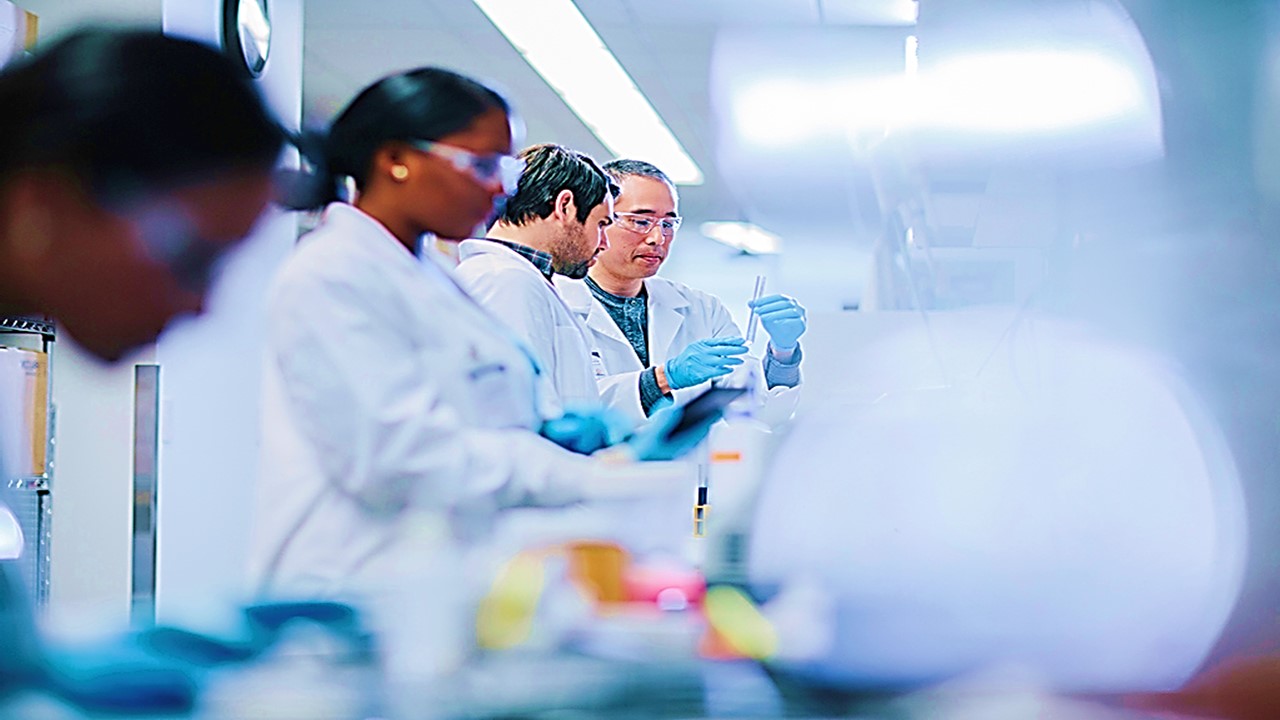The clinical trial landscape is undergoing a paradigm shift with the emergence of digital twin technology—a virtual replication of physical systems that enables real-time simulation and predictive analytics. In the context of trial design and logistics, digital twins offer unprecedented precision in planning inbound and outbound operations, from patient recruitment to drug distribution. By mirroring the complexities of trial execution in a risk-free digital environment, researchers can identify bottlenecks, optimize resource allocation, and enhance regulatory compliance before real-world implementation. This article explores how digital twins are transforming clinical trial efficiency, reducing costs, and accelerating drug development timelines.
The Anatomy of a Clinical Trial Digital Twin
A digital twin in clinical research is not a singular entity but an interconnected system of computational models that replicate trial parameters, patient demographics, and logistical workflows. At its core, it integrates data from electronic health records, wearable devices, and supply chain management systems to create a dynamic, evolving simulation. The twin accounts for variables such as patient dropout rates, site-specific enrollment challenges, and cold chain storage requirements, allowing researchers to stress-test scenarios before committing resources.
The fidelity of these models hinges on high-resolution input data, including genetic profiles, pharmacokinetic responses, and historical trial performance metrics. Machine learning algorithms refine the twin’s predictive accuracy by continuously assimilating real-world feedback. For example, a digital twin simulating a global Phase III trial can predict how seasonal variations might impact patient attendance in tropical versus temperate regions, enabling proactive adjustments to site staffing and monitoring schedules.
Regulatory agencies are increasingly recognizing the value of digital twins in protocol design. By simulating patient adherence under different dosing regimens, researchers can optimize visit schedules to minimize burden without compromising data integrity. The twin also models supply chain disruptions, such as delayed API shipments or temperature excursions, ensuring contingency plans are preemptively embedded into trial logistics.
The computational backbone of these systems often relies on federated learning, where decentralized data sources contribute to the model without compromising patient privacy. This is particularly critical in multinational trials, where data sovereignty laws restrict cross-border information sharing. The digital twin thus becomes a harmonizing platform, bridging disparate datasets while maintaining compliance.
Optimizing Patient Recruitment and Retention Through Simulation
One of the most resource-intensive aspects of clinical trials is patient recruitment, where delays can inflate costs and deray timelines. Digital twins address this by simulating enrollment trajectories across different geographies and demographics. By inputting historical screening data, the model identifies which sites are likely to underperform and suggests alternative recruitment strategies, such as leveraging telehealth platforms or community health networks.
The twin also predicts retention challenges by analyzing behavioral patterns from past trials. For instance, if a particular demographic exhibits higher dropout rates due to frequent travel, the model might recommend decentralized trial elements, such as home health visits or mobile phlebotomy services. These insights enable sponsors to design more patient-centric protocols, reducing attrition before it occurs.
Social determinants of health—such as socioeconomic status and access to transportation—can be modeled to forecast participation barriers. The digital twin might reveal that a trial site located in an urban center with poor public transit could benefit from ride-sharing partnerships, whereas rural sites may require localized satellite clinics. These granular adjustments, tested virtually, prevent costly mid-trial corrections.
Real-world evidence (RWE) feeds back into the twin, refining its predictive capabilities. If a simulated scenario overestimates enrollment speed, the system recalibrates, improving future projections. This iterative learning loop transforms patient recruitment from a reactive process into a precision-guided operation.
Streamlining Investigational Product Logistics
The inbound and outbound logistics of clinical trial materials—drug formulations, biologics, and comparators—are fraught with complexity. Temperature-sensitive products demand stringent cold chain management, while global distribution must navigate customs delays and import regulations. Digital twins simulate these logistics networks, identifying optimal shipping routes, warehouse locations, and inventory levels to prevent stockouts or wastage.
By integrating IoT sensor data from smart packaging, the twin monitors real-time conditions like temperature, humidity, and shock exposure. If a simulated shipment predicts a high risk of deviation, the model reroutes it through alternative carriers or adjusts packaging configurations. This preemptive troubleshooting minimizes the likelihood of costly resupply operations.
Just-in-time inventory strategies are tested within the twin to balance supply availability with storage constraints. For example, a trial testing an orphan drug with limited shelf life might use the model to determine the ideal batch size and frequency of resupply shipments. The twin also factors in manufacturing lead times, ensuring that production schedules align with trial milestones.
Multi-modal transport scenarios—air, sea, and ground—are evaluated for cost, speed, and reliability. The twin might reveal that a hybrid approach, combining air freight for time-sensitive biologics with ocean shipping for stable comparators, offers the best balance. These insights streamline procurement decisions before contracts are signed.
Risk Mitigation and Adaptive Trial Design
Clinical trials are inherently uncertain, with risks ranging from unexpected adverse events to geopolitical disruptions. Digital twins enable adaptive trial designs by modeling these risks and their downstream impacts. For example, if a twin simulates a pandemic resurgence, it can predict how site closures would affect data collection and recommend preemptive telehealth integrations.
Protocol deviations are another critical area where digital twins add value. By simulating investigator adherence to complex dosing regimens, the model can identify sites likely to require additional training or monitoring. This reduces protocol violations that might otherwise invalidate trial results.
Supply chain vulnerabilities, such as single-source API dependencies, are stress-tested within the twin. The system might suggest dual-sourcing strategies or buffer stock placements to mitigate shortages. These virtual rehearsals ensure resilience without the financial burden of real-world trial-and-error.
Regulatory scrutiny is also preemptively addressed. The twin models inspection scenarios, identifying potential documentation gaps or compliance weak points before audits occur. This proactive approach minimizes the risk of regulatory holds that could delay approvals.
Enhancing Site Selection and Performance Monitoring
Not all clinical trial sites perform equally, and poor site selection can lead to costly delays. Digital twins analyze historical site performance data—enrollment rates, protocol adherence, and data quality—to rank potential locations. The model might flag sites with high staff turnover or inadequate infrastructure, steering sponsors toward more reliable partners.
Resource allocation is optimized by simulating site workflows. If a twin predicts that a site’s patient volume will overwhelm its coordinators, the model might recommend additional staffing or decentralized support tools like eConsent platforms. These adjustments, tested virtually, prevent operational bottlenecks before they arise.
Geopolitical and environmental risks are also factored in. A digital twin might simulate how a hurricane-prone region could disrupt trial continuity, prompting sponsors to diversify sites across climatically stable zones. Similarly, regulatory changes in specific countries are modeled to assess their impact on trial feasibility.
Real-time performance dashboards feed into the twin, allowing dynamic adjustments. If a site underperforms mid-trial, the model can reallocate patients or resources to higher-performing locations. This agility ensures trials stay on track despite unforeseen challenges.
The Role of AI in Evolving Digital Twins
Artificial intelligence is the engine that powers digital twins, enabling them to learn and adapt. Machine learning algorithms process vast datasets—from EHRs to weather patterns—to refine simulations. Natural language processing (NLP) tools extract insights from unstructured data, such as investigator notes or patient feedback, further enhancing the twin’s accuracy.
Generative AI is now being explored for scenario creation, automatically proposing novel trial designs or logistics strategies that human planners might overlook. These AI-generated simulations are then validated within the twin, pushing the boundaries of innovation in clinical research.
Edge computing allows digital twins to operate in low-connectivity environments, critical for trials in remote regions. Decentralized AI models ensure real-time decision-making without latency, enabling rapid responses to emerging risks.
Ethical considerations remain paramount. AI-driven twins must avoid biases in patient recruitment or site selection, ensuring equitable trial access. Ongoing human oversight ensures that algorithmic recommendations align with ethical and regulatory standards.
Regulatory and Industry Adoption Challenges
Despite their potential, digital twins face hurdles in widespread adoption. Regulatory agencies are still defining validation frameworks for these models, requiring robust evidence of their predictive accuracy. Sponsors must demonstrate that simulated outcomes reliably translate to real-world performance, a process that demands extensive verification.
Data silos pose another challenge. Clinical, logistical, and manufacturing data often reside in disconnected systems, hindering the twin’s ability to function holistically. Interoperability standards are emerging to bridge these gaps, but progress is incremental.
Cost and expertise barriers limit access for smaller sponsors. Building and maintaining a high-fidelity digital twin requires significant investment in computational infrastructure and skilled personnel. Cloud-based solutions are democratizing access, but adoption remains skewed toward large pharma and CROs.
Industry collaboration is key to overcoming these obstacles. Consortia are forming to establish best practices and share non-proprietary models, accelerating collective learning. As regulatory clarity improves and technology costs decline, digital twins will likely become a staple in clinical trial planning.
The Future of Clinical Trials is Virtual
Digital twins represent a seismic shift in how clinical trials are designed and executed. By merging virtual simulation with real-world logistics, they offer a proactive, data-driven approach to overcoming traditional bottlenecks. From optimizing patient recruitment to ensuring supply chain resilience, these models are redefining efficiency in drug development.
The next frontier lies in fully autonomous trials, where digital twins dynamically adjust protocols based on real-time data. As AI and IoT technologies advance, the line between simulation and reality will blur, ushering in an era of precision clinical research. The future is not just digital—it’s virtually inevitable.
Engr. Dex Marco Tiu Guibelondo, B.Sc. Pharm, R.Ph., B.Sc. CpE
Editor-in-Chief, PharmaFEATURES

Subscribe
to get our
LATEST NEWS
Related Posts

Clinical Trial Supply Chain
From Chaos to Control: The Clinical Reinvention of Supply Chain through Data-Driven Infrastructure
In a healthcare landscape increasingly dominated by automation and AI, it’s tempting to see technology as a cure-all.

Clinical Trial Supply Chain
Deciphering the Nexus: Cluster Analysis in Shaping Regional Supply Chain Hubs
Cluster analysis has become instrumental in understanding and optimizing supply chains.
Read More Articles
Pathogenic Targeting 5.0: The Rise of RNA Therapeutics and Peptide-Based Drugs in Modern Medicine
Unlike traditional small-molecule drugs, which interact with proteins, RNA therapies modulate gene expression directly, enabling interventions at the root of disease.
Chemical Gale: How Wind Energy is Reshaping Industrial Manufacturing
The integration of wind energy into chemical manufacturing constitutes a fundamental reimagining of process chemistry.













